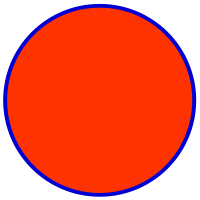Open set

Imagine you have a big box of toys. Some toys are big, some are small, some are round, some are square. Now imagine you want to pick out all the toys that are round and small. You can do this by putting a special rule in place - if a toy fits in your hand comfortably and can roll without getting stuck, then it's a round and small toy.
Now let's apply this rule to another scenario. Imagine you have a big whiteboard and a bunch of markers. You can draw all sorts of shapes on the board, some may be big, some may be small, some may be closed (like a circle or square) and some may be open (like a spiral or curve). If you want to pick out all the shapes that are open, you can use a similar rule. An open shape is one where you can draw a line inside the shape without ever touching its edges.
This rule helps define something called an "open set" in math. An open set is a collection of points on a graph or in an equation that follow this rule. The points can be big or small, positive or negative, real or imaginary, but they all have one thing in common - you can always draw a circle around them that doesn't touch any other points outside the collection. This means that the collection is "open" in the sense that it doesn't include any boundary points or endpoints.
In summary, an open set is a collection of points that can be defined using a rule that allows for a circle to be drawn around each point without touching any other points outside the collection. It's like picking out all the round and small toys from a box, or all the open shapes from a whiteboard.
Now let's apply this rule to another scenario. Imagine you have a big whiteboard and a bunch of markers. You can draw all sorts of shapes on the board, some may be big, some may be small, some may be closed (like a circle or square) and some may be open (like a spiral or curve). If you want to pick out all the shapes that are open, you can use a similar rule. An open shape is one where you can draw a line inside the shape without ever touching its edges.
This rule helps define something called an "open set" in math. An open set is a collection of points on a graph or in an equation that follow this rule. The points can be big or small, positive or negative, real or imaginary, but they all have one thing in common - you can always draw a circle around them that doesn't touch any other points outside the collection. This means that the collection is "open" in the sense that it doesn't include any boundary points or endpoints.
In summary, an open set is a collection of points that can be defined using a rule that allows for a circle to be drawn around each point without touching any other points outside the collection. It's like picking out all the round and small toys from a box, or all the open shapes from a whiteboard.
Related topics others have asked about:
